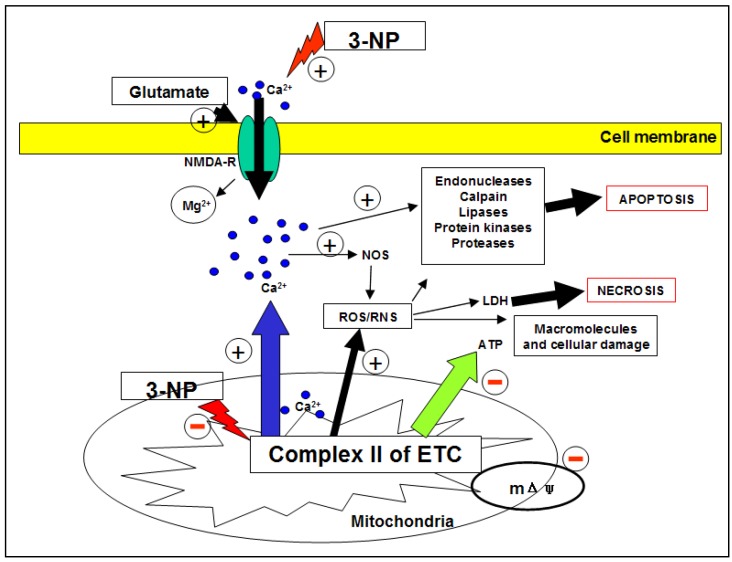Figure 2.
Neurotoxicity by 3-NP: 3-NP promptes complex II inhibition and increased sensibility of NMDA-R (excitotoxicity). 3-NP toxicity affects microglia, astrocytes and neurons, and causes secondary excitotoxicity by making neurons more vulnerable to endogenous basal levels of glutamate, while prompting a reduction of ATP availability. This scenario causes relief of voltage-dependent Mg2+ blockade at the NMDA-R pore. In turn, the activation of these receptors leads to massive entry of Ca2+ to cytoplasm and further activation of a number of calcium dependent enzymes, including calpains and NOS. Alltogether, these events lead to cell death by different pathways: necrosis and/or apoptosis, depending of intensity of insult and cell type. ETC: Electron transport chain; LDH: Lactate dehydrogenase; mΔψ: Membrane potential; NMDA-R: N-methyl D-aspartate (NMDA) receptor; 3-NP: 3-Nitropropionic acid; RNS: Reactive nitrogen species; ROS: Reactive oxygen species.

